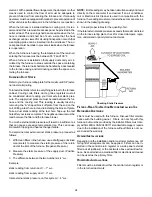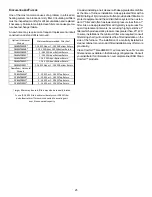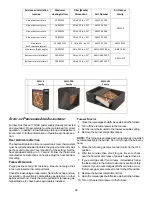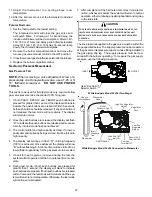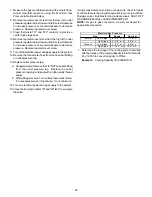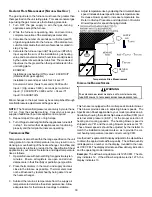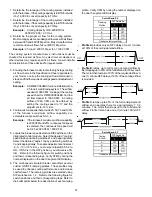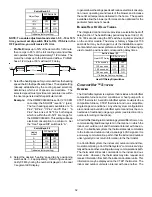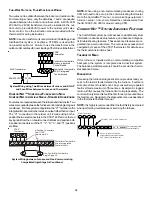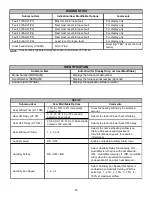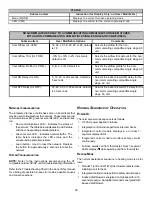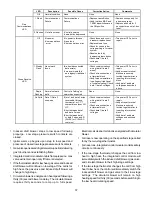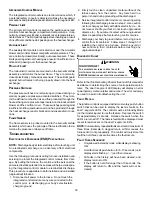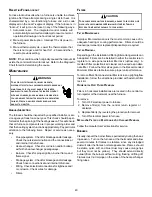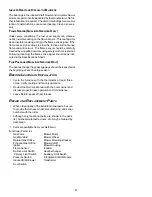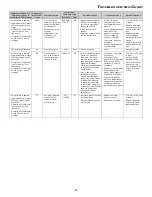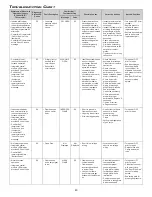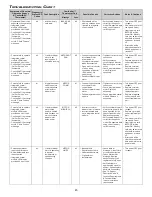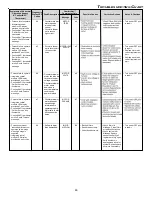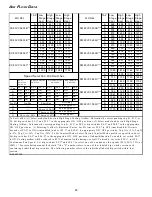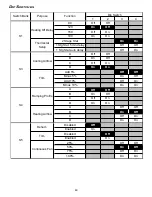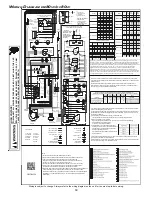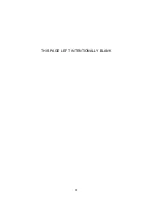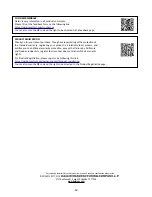
38
•
R and W1 (or R and W1/W2) thermostat contacts open,
completing the call for heat.
•
Gas valve closes, extinguishing flame.
•
Induced draft blower is de-energized following a fifteen
second post purge. Humidifier terminals are de-energized.
•
Circulator blower continues running for the selected heat
off delay period (90, 120, 150 or 180 seconds). The
speed run during this period depends on the last heat
call provided by the thermostat.
If the last call for heat was a call for low heat, the air
circulator motor will run on low heat speed for the duration
of the heat off delay period (90, 120, 150 or 180 seconds).
If the last call for heat was a call for high heat, the air
circulating motor will run on the high heating speed for
thirty (30) seconds and then switch to the low heating
speed for the
balance
of the heat off delay period (60,
90, 120 or 150 seconds).
•
Circulator blower and electronic air cleaner terminal is
de-energized.
•
Circulator blower ramps down to OFF during the 30
seconds following the heat off delay period.
•
Furnace awaits next call from thermostat.
C
OOLING
M
ODE
The normal operational sequence in cooling mode is as fol-
lows:
•
R and Y1/G or Y2/G thermostat contacts close, initiating
a call for cool.
•
Integrated control module performs safety circuit checks.
•
Outdoor fan and compressor are energized to their
appropriate speed.
•
Circulator blower is energized on the appropriate cool
speed at the level and time determined by the selected
ramping profile. Electronic air cleaner terminal is
energized with circulator blower.
•
Furnace circulator blower and outdoor cooling unit run
their appropriate speeds, integrated control module
monitors safety circuits continuously.
•
R and Y1/G or Y2/G thermostat contacts open,
completing the call for cool.
•
Outdoor fan and compressor are de-energized.
•
Circulator blower continues running during a cool off delay
period. The OFF delay time and airflow level are
determined by the selected ramping profile.
•
Electronic air cleaner terminal and circulator blower are
de-energized.
•
Furnace awaits next call from thermostat.
F
AN
O
NLY
M
ODE
The normal operational sequence in fan only mode is as fol-
lows:
•
R and G thermostat contacts close, initiating a call for
fan.
•
Integrated control module performs safety circuit checks.
•
Circulator blower is energized on continuous fan speed
(25, 50, 75 or 100% of the furnace’s maximum airflow
capability. Fan speed selected by dip switches.) following
a five (5) second delay. Electronic air cleaner terminal
is energized.
•
Circulator blower runs, integrated control module
monitors safety circuits continuously.
•
R and G thermostat contacts open, completing the call
for fan.
•
Circulator blower is de-energized. Electronic air cleaner
terminal is de-energized.
•
Furnace awaits next call from thermostat.
O
PERATIONAL
C
HECKS
The burner flames should be inspected with the burner com-
partment door installed. Flames should be stable, quiet, soft,
and blue (dust may cause orange tips but they must not be
yellow). Flames should extend directly outward from the burn-
ers without curling, floating, or lifting off. Flames must not
impinge on the sides of the heat exchanger firing tubes.
Check the
Burner Flames for:
1. Stable, soft and blue.
2. Not curling, floating
or lifting off.
Burner Flame
S
AFETY
C
IRCUIT
D
ESCRIPTION
A number of safety circuits are employed to ensure safe and
proper furnace operation. These circuits serve to control any
potential safety hazards and serve as inputs in the monitoring
and diagnosis of abnormal function. These circuits are con-
tinuously monitored during furnace operation by the integrated
control module.

